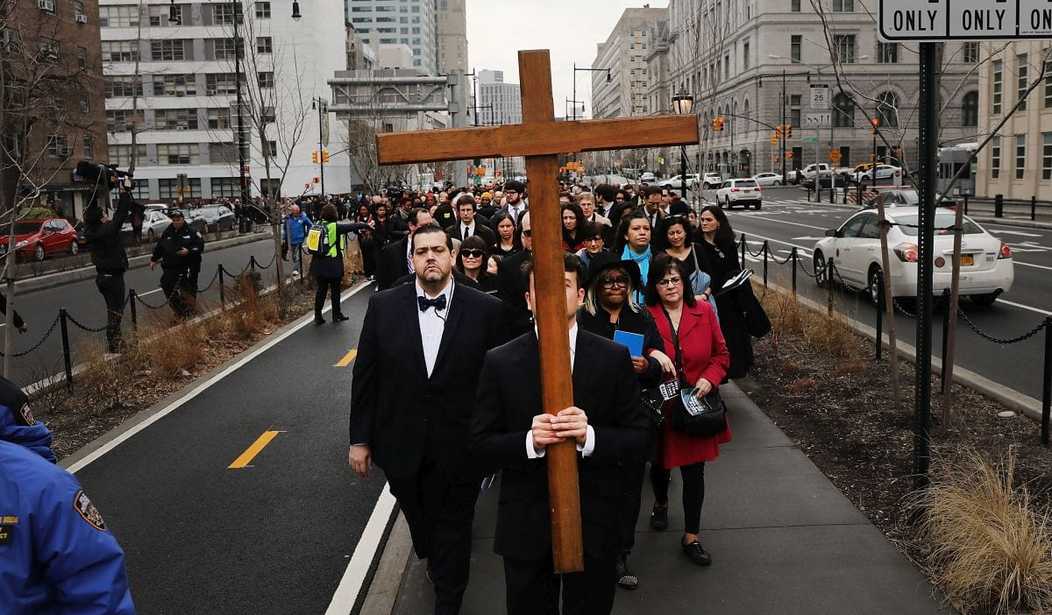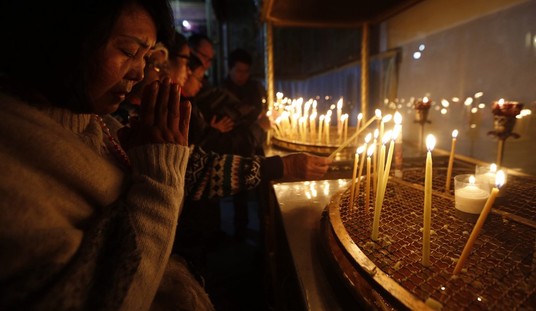Is there a line between faith and fanaticism? Or is fanaticism only an extreme manifestation of love for God?
For many people of faith — even deep, abiding faith — Holy Week rituals followed by some Filipinos are considered extreme. The description is not easy to read — so be forewarned.
In a collection of towns located north of Manila, eight people had 8cm spikes driven through their palms and feet in hot, dry fields meant to echo the site where Christ was crucified some 2,000 years ago.
Among an otherwise male field of penitents was 39-year-old Mary Jane Sazon, who made her seventh trip up onto the cross.
‘Fulfilling my vow is important to me because ever since I started this the Lord answers my prayers,’ Sazon told reporters as she pushed her dark hair back with freshly bandaged hands.
She would not be drawn on being the only woman crucified on Friday, saying ‘I don’t care what other people might say.’
While the ordeal is undeniably painful, the penitents’ weight rests on a wooden step and they spend only a few moments nailed to the cross before being carried to the medical tent for treatment.
At the same time, scores of bare-chested men, some of whose faces were concealed by hoods, lashed their backs bloody, as they walked through the streets before selfie-snapping onlookers.
The swinging of their whips left droplets of blood on cars, houses and even bottles of soda displayed on snack vendors’ tables that lined the road.
They struck their backs with wooden rods, one for each station of the cross as depicted in Catholic tradition of Jesus’ walk to the hill of Golgotha where he was crucified.
The gory scenes are traditional in small towns of the primarily Catholic nation before Easter as a form of worship believed to cleanse sins, cure illness, and grant wishes.
‘If one of my family members gets sick, this is what we do,’ said Norman Lapuot, 25, as he flogged himself with a bamboo-tipped whip. ‘I do this for my relatives.’
Mr Lapuot, who said it was his fourth time taking part in the ceremony, added that he believed the ritual bloodletting had helped his grandfather recover from a stroke.
Though a majority of the Philippines’ 80 million Catholics spend Good Friday at church or with family, participants undergo the ordeal to atone for sins or to seek divine intervention.
One man has been nailed to a cross 32 times.
A Philippine man who has been nailed to a cross every Easter for the past 32 years in a Good Friday re-enactment of Jesus Christ’s crucifixion says he no longer feels any pain from his wounds.
Ruben Enaje, 58, again portrayed Christ on Friday in the traditional religious rite in Cutud village, about 76 km (47 miles) from the capital Manila.
“In the past, I went home injured and limping, but this year I feel so great,” Enaje said after the ritual held under a sweltering sun.
He said he believed his strong Catholic faith helped him avoid pain.
“I feel like he is telling me ‘go ahead, keep it up’,” he said, referring to God.
The Philippine Catholic Church does not condone the gruesome practice, calling it a “misinterpretation of faith.”
These are ordinary people whose faith is so powerful it is a living thing in their lives. Some might call them ignorant peasants, but that’s a monumental — and usually deliberate — mischaracterization of who they are. They are simple people with a simple, uncomplicated faith who perform extraordinary acts of physical courage in the name of that faith. Some may consider that fanaticism, but they are hurting no one except themselves — unlike some forms of fanaticism that strike out and kill innocents. If it is fanaticism, it is obviously a fulfilling and rewarding experience that most of the participants in these rituals perform year after year.
We often hear criticism that religion is nothing more than “superstitious nonsense” and that faith in God has caused more wars and killed more people than any other single reason in history. This is an extraordinarily myopic view of faith. For every Crusade, there was a Michelangelo and there were dozens of other Renaissance artists who created incredibly beautiful artworks inspired by their belief in God. Great thinkers like Copernicus and Newton revolutionized our thinking about the Cosmos, looking for answers in what they saw as the sublime beauty of creation. Einstein wanted to “know the mind of God.”
Faith has inspired courage in oppressed countries where simply worshiping God by ordinary people can be a death sentence. Isn’t there anything in faith that atheists and critics can find uplifting, valuable, or necessary?
For people of faith, there is no answer. Most don’t care. For in the final analysis, you must ask what makes life worth living. For those who harbor a strong faith in God, the question answers itself.










Join the conversation as a VIP Member